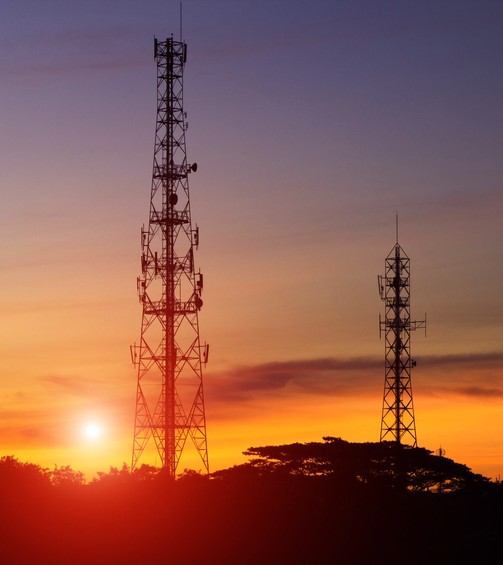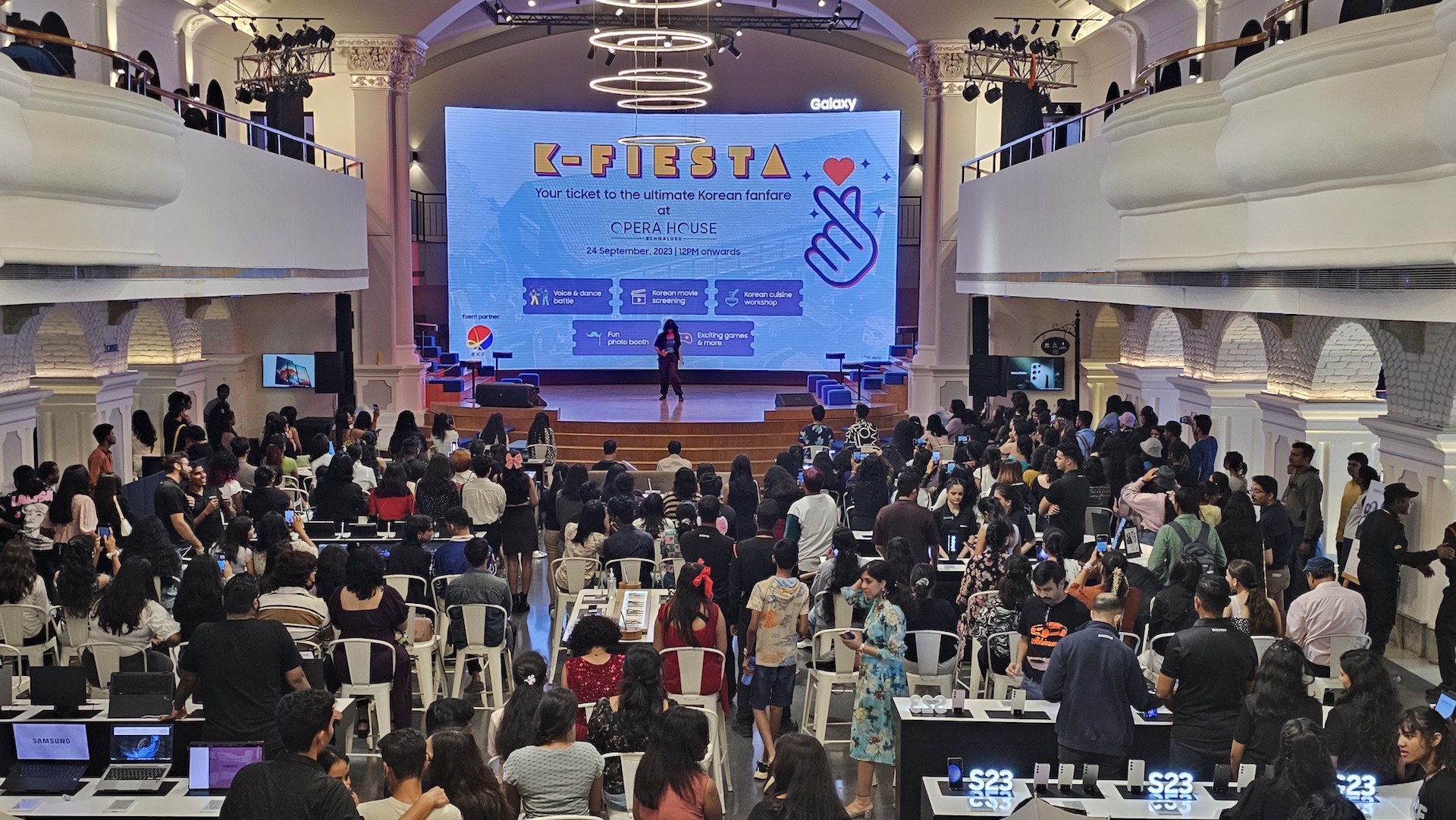– The share of 4G subscriber base of top 3 telcos expanded by about 5% to 70.3%.
– The average data price is also estimated to have surged by 26.9% to Rs.10.9 per GB backed by price hike.
– Industry ARPU averaged about Rs.96 during FY21, an estimated rise of 20.6% on a yearly basis.
The data consumption in India increased in FY21 is estimated to have rose by a strong 17.5% y-o-y and averaged at 12.2GB during the year.
Care Rating report ‘Performance Indicators of telecom industry improves in FY21 states that data consumption in India averaged almost at 12GB per month per subscriber in each of the first 3 quarters during the year.
“It is estimated to have averaged at around similar level in Q4FY21. Thus, data consumption in FY21 is estimated to have rose by a strong 17.5% y-o-y and averaged at 12.2GB during the year,” states the report.
It is interesting to note that the average data consumption per subscriber per month improved sequentially in each of the quarters during FY20 from 9.8 GB per month in Q1FY20 to 11.2GB per month in Q4FY20 and averaged at 10.4GB per
month during FY20.
The growth in data volumes because of need of more data at each individual end aided the uptick in data prices. The price of per GB data that was around Rs.7-Rs.8.5 during the first 3 quarters of FY21 moved beyond this level in Q4FY21 where it saw a sharp increase of 32.9% to Rs.11.2 per GB on a sequential basis backed by price hike.
In the following quarters, this price level sustained, and it revolved around Rs.10-Rs.11 per GB which is estimated to have stood at Rs.11.1 per GB in Q4FY21. The data price thus is estimated to have averaged at around Rs.10.9 per GB for FY21, which is growth of 26.9% on a yearly basis.
Telco-wise market share
Among the telcos(refer Chart 3 below) , Reliance Jio held the largest share of 55% in India’s broadband (wired + wireline) subscriber base of 765 million as on February 2021 followed by Bharti Airtel, Vodafone Idea and BSNL that accounted for 25%, 16% and 3%, respectively, of the total broadband subscriber base. The highest share of Reliance
Jio in the broadband subscriber base is primarily because of its total 4G telephone subscriber base, which is not the case with other telcos. Also in terms of wireless telephone subscribers, Reliance Jio has the highest share of 36% of the total wireless subscriber base of 1,168 million as on February 2021. The other telcos Bharti Airtel, Vodafone Idea and BSNL held a share of 30%, 24% and 10%, respectively.
It can be seen from the below chart that while Bharti Airtel saw an improvement in its market share in both the
categories, Vodafone Idea witnessed a contraction in both the groups. As on February 2021, the broadband subscriber
base and wireless telephone subscriber base of Bharti Airtel expanded by 4% (to 25%) and 2% (to 30%), respectively,
and that of Vodafone Idea contracted by 1% to 16% (broadband subscriber base) and 4% to 24% (wireless telephone subscriber base).
In case of Reliance Jio, the share increased by 3% to 36% in telephone subscriber base and reduced by 1% to 55% in broadband subscriber base and in case of BSNL, the telco’s share in telephone subscriber base remained same at 10% and its share in broadband subscriber base contracted by 1% to 3% as on February 2021.
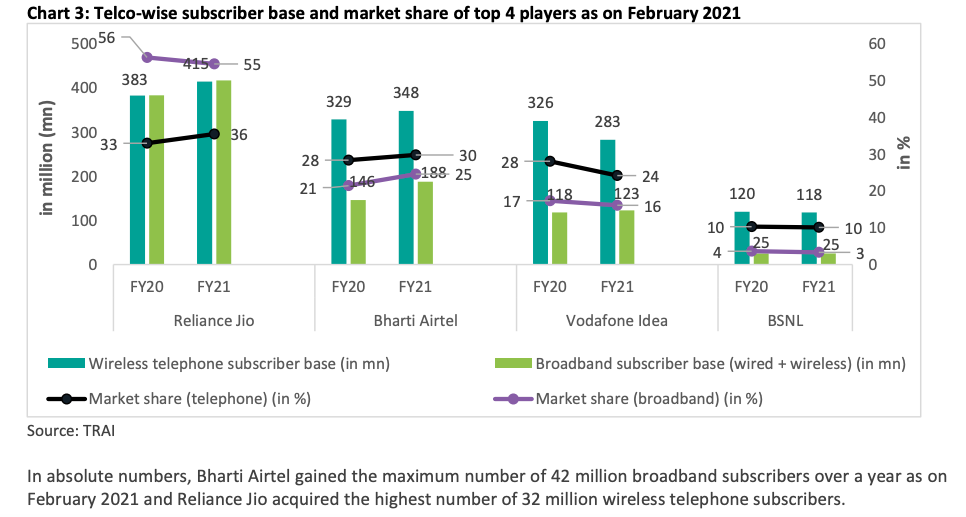
Increase in share of 4G subscribers:
Any upward movement in the share of 4G subscribers is auguring well for the telecom industry as this set of users are better paying customers compared to 2G and 3G network users. During the past 3 years (FY19 to FY21), the aggregate 4G subscriber base of the top 3 telcos increased by a healthy 50.8% from 474 million in FY19 to 715 million in FY21, thereby, expanding the share of 4G subscribers in their total subscriber base from 51.4% in FY19 to 70.3% in FY21.
Spectrum reframing practice of the telcos to upgrade the users to make them more revenue generating and the need of users to have access to higher speed and volume of data thus resulted in augmentation of 4G subscriber base during these years.
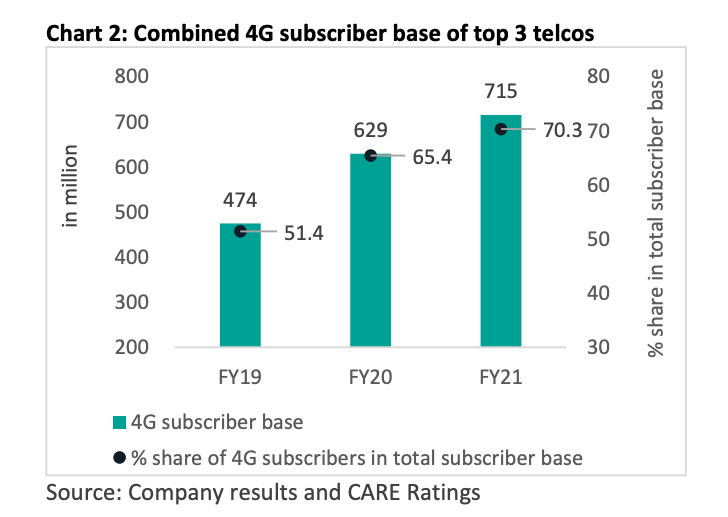
The combined share of 4G subscribers in the aggregate subscriber base of the top 3 telcos can be considered as
representative of the industry. The aggregate telephone subscriber base of these top 3 telcos accounted for close to
90% of the total telephone (wireless + wireline) subscriber base of the industry as on February 2021.
As discussed above, various factors supported and prompted the industry ARPU to move up in the past quarters. The
growth in ARPU however needs to be sustained for the betterment of industry where the telcos aim to increase their
respective ARPU levels to at least Rs.200 per subscriber per month.
The ARPU of the top 3 telcos is estimated to have averaged at around Rs.138 during FY21, an increase of 11.6% on a y-o-y basis. Thus in order to achieve the level of Rs.200, a hike in ARPU appears imminent in the coming months and the price growth needs to be much more during FY22 than seen in FY21. However, it remains to be seen if the telcos increase ARPU prices or wait for the government’s decision on floor tariff or pricing.
Industry Average Revenue per User (ARPU) crosses Rs.90 mark in FY21
The industry Average Revenue per User (ARPU) which was in the range of Rs.74-Rs.79 in the first 3 quarters of FY20
increased to the level of Rs.91 in the Q4FY20 (sequential growth of 16.3%) primarily backed by price hikes (up to 40%) undertaken by the telcos for its prepaid users from the month of December 2019 onwards.
Following this, the ARPU continued with the level of Rs.90 for the next 2 quarters and crossed Rs.100 mark in Q3FY21. The ARPU however is estimated to have declined to about Rs.96 in Q4FY21 due to the application of bill & keep regime (1 January 2021 onwards) from the earlier Interconnect Usage Charges (IUC) regime. Subsequently, the ARPU for FY21 is estimated to have averaged at Rs.96, an increase of 20.6% on a y-o-y basis IUC is a charge paid by an originator call network to the receiving call network (where the call terminates) to facilitate the call.
These charges were fixed at 6 paise per minute with effect from 1 October 2017 from the earlier 14 paise per minute charge. However, these charges were abolished to 0 paise per minute (also known as bill & keep regime) with effect from 1 January 2021. This, in turn, reduced the ARPU of the telcos in Q4FY21 but at the same time, it als
prevented the telcos from incurring this expense.
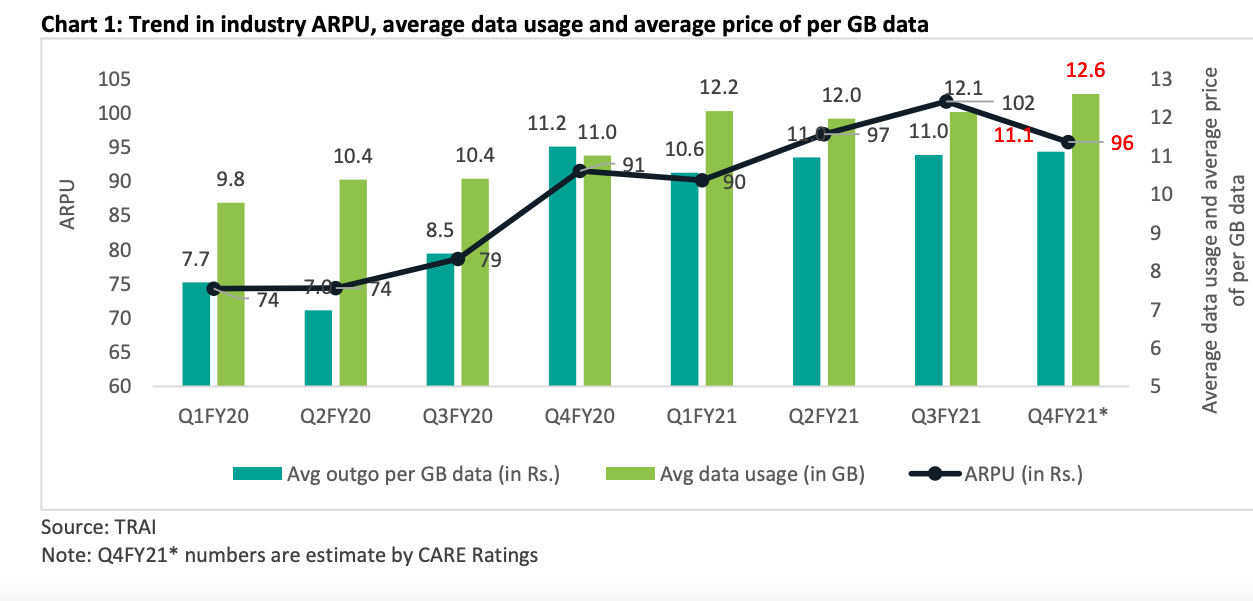
The price (ARPU) hike was undertaken by telcos primarily to subside financial stress in the industry and was supported by an upward momentum in data consumption, data prices and an increase in share of 4G subscribers. The share of revenues from data in ARPU has grown tremendously for the telecom industry over the years. It has increased from 21.6% in the December 2016 quarter to 78.1% in the December 2020 quarter.
Data consumption: The average data consumption per subscriber per month improved sequentially in each of the
quarters during FY20 from 9.8 GB per month in Q1FY20 to 11.2GB per month in Q4FY20 and averaged at 10.4GB per
month during FY20.
The data consumption in Inida increased further in FY21 as it averaged almost at 12GB per month per
subscriber in each of the first 3 quarters during the year and is estimated to have averaged at around similar level in Q4FY21. Thus, data consumption in FY21 is estimated to have rose by a strong 17.5% y-o-y and averaged at 12.2GB
during the year.
Concluding remarks
• During the past 3 years FY19 to FY21, the aggregate 4G subscriber base of the top 3 telcos increased by a healthy 50.8% from 474 million in FY19 to 715 million in FY21, thereby, expanding the share of 4G subscribers in their total subscriber base from 51.4% in FY19 to 70.3% in FY21. Spectrum reframing practice of the telcos to upgrade the users to make them more revenue generating and the need of users to have access to higher speed and volume of data thus resulted in augmentation of 4G subscriber base during these years.
• The ARPU of the top 3 telcos is estimated to have averaged at around Rs.138 during FY21, an increase of 11.6%
on a y-o-y basis. Thus in order to achieve the level of Rs.200, a hike in ARPU appears imminent in the coming
months and the price growth needs to be much more during FY22 than seen in FY21. However, it remains to
be seen if the telcos increase ARPU prices or wait for the government’s decision on floor tariff or pricing.


